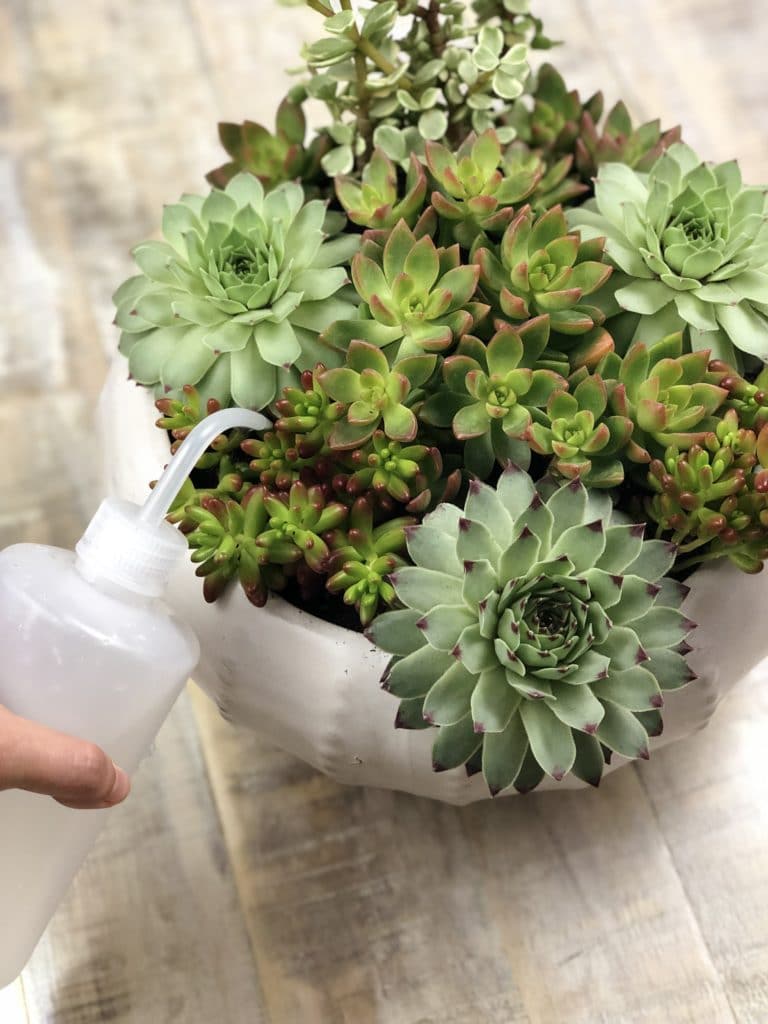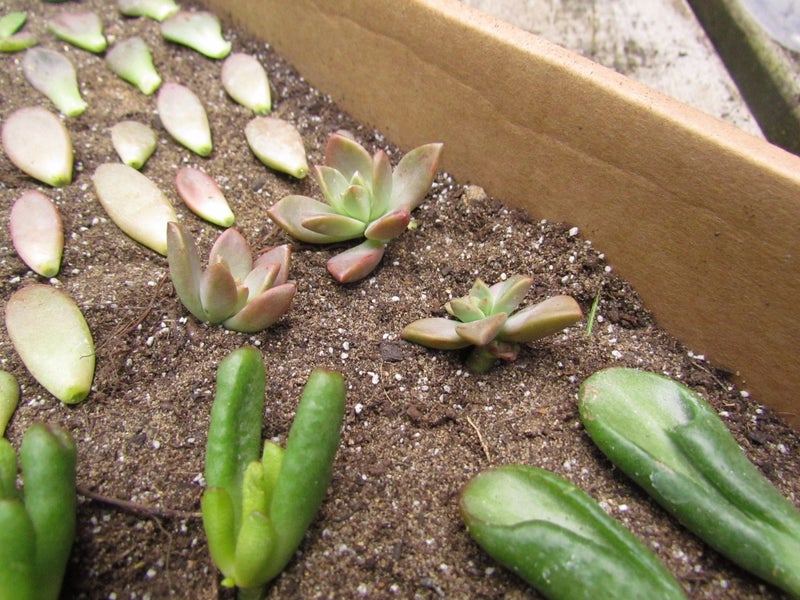There's a special succulent often grown as ground cover, splashing a striking deep red shade across various mountainous areas and sunny rocky gardens. This stunning succulent, known as Sedum spurium Dragon's Blood Stonecrop, isn't just any ordinary plant. With its ability to spread rich hues across challenging terrains, it has become a favorite for both gardeners and landscape designers. Originating from the rugged regions of Europe and Asia, this succulent thrives where others struggle, creating a breathtaking display of natural beauty.
The name "Dragon's Blood" likely comes from the striking red color that the foliage takes on during cooler months. Unlike many succulents that maintain a consistent color throughout the year, Dragon's Blood Stonecrop undergoes a notable color change. Its leaves transition from green in the growing season to deep red in cooler temperatures, providing seasonal interest. This dramatic transformation gives the appearance of a rich, deep "blood" red, creating the mythical imagery of “dragon's blood”.
Dragon’s Blood is a sedum stonecrop succulent, meaning it is a mat-forming plant, spreading horizontally to cover the ground. This differs from many other succulents that grow more vertically or in rosette forms. The leaves of Dragon's Blood Stonecrop are small, fleshy, and arranged in a dense, overlapping pattern. This is distinct from other succulents like Echeveria, which have larger, rosette-shaped leaves.
Dragon's Blood Stonecrop stands out for its adaptability, striking seasonal color changes, and versatility as both a houseplant and ground cover. It is particularly cold-hardy, surviving in USDA zones 3-9. This makes it more resilient to cold temperatures compared to some other succulents that are more frost-sensitive. These qualities make it a favorite among succulent lovers and gardeners looking for low-maintenance, visually appealing plants.
Toxicity
Sedum succulents, including varieties like Dragon's Blood Stonecrop, are generally considered non-toxic to humans and pets. They are among the safer plants to include in homes and gardens, especially if you have pets or small children. They can be handled safely, and accidental ingestion typically does not cause serious harm. However, as with many plants, ingestion in large quantities can cause mild digestive upset and some people might experience irritation due to allergies. This is uncommon but can happen, so it's a good idea to wash your hands after handling these plants, especially if you have sensitive skin.
General Care
1. Lighting

This succulent generally prefers full sun, requiring at least six hours of direct sunlight daily. This exposure is essential for robust growth and maintaining the rich pigmentation in its leaves, especially in varieties like 'Dragon's Blood,' which develop deep red hues under bright light. However, it is adaptable and can also tolerate partial sun, receiving about 4-6 hours of direct sunlight a day. In extremely hot climates, providing some afternoon shade can prevent leaf scorching, and partial sun conditions can be more suitable during the hottest parts of summer.
When grown indoors, Sedum needs a bright, sunny spot, ideally near a south-facing window where it can get plenty of indirect light. If natural sunlight is insufficient, particularly during winter months, using grow lights can help provide the necessary light intensity. A grow lamp is an effective option to ensure your Sedum receives adequate light.
Seasonal adjustments are also important. During winter, Dragon’s Blood may need less light as it enters a dormant phase, though it should still receive some indirect light to maintain its health. When transitioning this plant from indoor to outdoor environments or vice versa, gradual acclimation is crucial. Sudden changes in light intensity can stress the plant, leading to sunburn or etiolation (stretching).
Signs of incorrect lighting include sunburn, which presents as bleached or scorched leaves if Sedum receives too much direct sunlight without proper acclimation, and weak, leggy growth with a loss of vibrant color if it receives insufficient light.
2. Watering
The watering requirements for Dragon's Blood vary slightly between indoor and outdoor environments. For indoor Dragon's Blood, it's crucial to ensure that the plant is not overwatered, as succulents are prone to root rot if kept in overly moist conditions. Water the plant thoroughly but allow the soil to dry out completely between waterings. This typically means watering once every 1-2 weeks, depending on the indoor climate and the season. During the winter months, when the plant is dormant, watering can be reduced to once a month.

Outdoor Dragon's Blood usually thrive with rainfall alone, but it may some watering during prolonged dry periods. Newly planted sedums might require more frequent watering until their root systems are well established. Like indoor plants, outdoor sedums should be watered thoroughly, allowing the soil to dry out completely before watering again. In areas with regular rainfall, additional watering might not be necessary except during drought conditions.
Both indoor and outdoor Dragon's Blood Stonecrop benefit from a "soak and dry" method, where the soil is soaked thoroughly, and then left to dry out before the next watering. This mimics their natural habitat conditions and helps prevent common issues related to overwatering.
3. Soil And Fertilizer
:max_bytes(150000):strip_icc():format(webp)/what-is-succulent-soil-header-990661277a864448b9302295d6464ace.jpg)
Dragon's Blood thrives in well-draining soil. The ideal soil mix for this plant should consist of a combination of standard potting soil, coarse sand, and perlite or pumice. This blend ensures proper aeration and drainage, mimicking the plant's natural habitat of rocky and sandy environments. For outdoor planting, it’s essential to choose a spot with naturally well-draining soil and good airflow. If your garden soil is heavy or clay-like, consider amending it with sand and perlite to improve its drainage capabilities.
When it comes to fertilization, Dragon's Blood is relatively low-maintenance and does not require frequent feeding. During its active growing season, which spans from spring to early autumn, you can apply a balanced, water-soluble fertilizer diluted to half strength once a month. This helps promote healthy growth and vibrant color. Avoid over-fertilizing, as excessive nutrients can lead to weak, leggy growth and may even harm the plant. Stop fertilizing in the winter months, when the plant goes dormant.
4. Temperature and Humidity
Dragon's Blood is a hardy succulent that can thrive in a range of temperature conditions. It is particularly well-suited for temperate climates and can tolerate a wide temperature range, making it versatile for various outdoor settings. The optimal temperature range for this succulent is between 65°F to 75°F. During the growing season in spring and summer, it flourishes in warm temperatures but can withstand higher heat if provided with adequate shade during the hottest parts of the day.
This plant is also quite resilient in cooler temperatures. In the fall and winter months, it can survive temperatures as low as 20°F and even endure light frost. However, in regions where severe frost is common, providing some protection, such as mulch or a frost cloth, can help ensure the plant’s survival through the winter.
Regarding humidity, Dragon's Blood prefers dry to moderately humid conditions. It does well in average household humidity levels when grown indoors and does not require additional humidity. High humidity levels can pose a risk, as they may lead to increased moisture around the roots, potentially causing root rot. Therefore, ensuring proper air circulation and avoiding overly damp conditions is crucial, especially in humid climates.
Extra Care
1. Potting And Repotting
When potting Dragon's Blood, it is important to use a well-draining soil mix, such as one formulated specifically for succulents or cacti. This type of soil prevents water from sitting around the roots, reducing the risk of root rot. Select a pot with adequate drainage holes to allow excess water to escape easily
For potted plant, repotting is recommended every 2-3 years or when the plant outgrows its current container. Signs that it’s time to repot include roots growing out of the drainage holes or the plant becoming top-heavy. Choose a new pot that is one size larger than the current one, and ensure it has good drainage.
2. Pruning
This succulent benefits from occasional trimming to encourage new growth, maintain a tidy appearance, and prevent it from becoming too leggy. For indoor Dragon's Blood, start by removing any dead or damaged leaves. Use a pair of sharp, sterilized scissors or pruning shears to cut away these leaves at the base. This not only improves the plant's appearance but also prevents potential pest infestations and diseases from spreading. You can also trim back any leggy or overly long stems to encourage a more compact and bushy growth habit.
For outdoor Dragon’s Blood, the pruning process is similar, but In the late fall or early spring, you can perform a more thorough pruning to remove any old growth and prepare the plant for the new growing season. This helps rejuvenate the plant and ensures it remains healthy and vibrant throughout the year.
3. Propagation

For stem cuttings, choose healthy stems, cut a 3-4 inch section, and let it callous over for a few days before planting in well-draining soil. Water sparingly until roots develop. For division, remove the plant from its pot or ground, divide it into sections with roots and stems, and replant each section. Water lightly and keep in a shaded area until established. Leaf cuttings involve selecting healthy leaves, letting them callous, placing them on soil, and misting occasionally. Roots and new plantlets will develop over a few weeks, which can then be planted separately.
Common Problems
Dragon's Blood is a resilient succulent, but it can face several common problems. Overwatering can lead to root rot, characterized by yellowing leaves and a mushy stem. Pests like aphids, mealybugs, and spider mites can infest the plant, causing discoloration and deformation. Sudden exposure to intense sunlight may result in sunburn or leaf scorch, shown as brown patches on the leaves. Poor drainage can lead to water retention and root rot, especially in compacted soil. Nutrient deficiency might cause poor growth and pale coloration, which can be addressed with diluted, balanced fertilizer during the growing season. Extreme temperature fluctuations, both freezing and excessive heat, can stress the plant, leading to dehydration and damage. Regular care, including proper watering, well-draining soil, adequate sunlight, and occasional fertilization, can help keep the plant healthy.






























